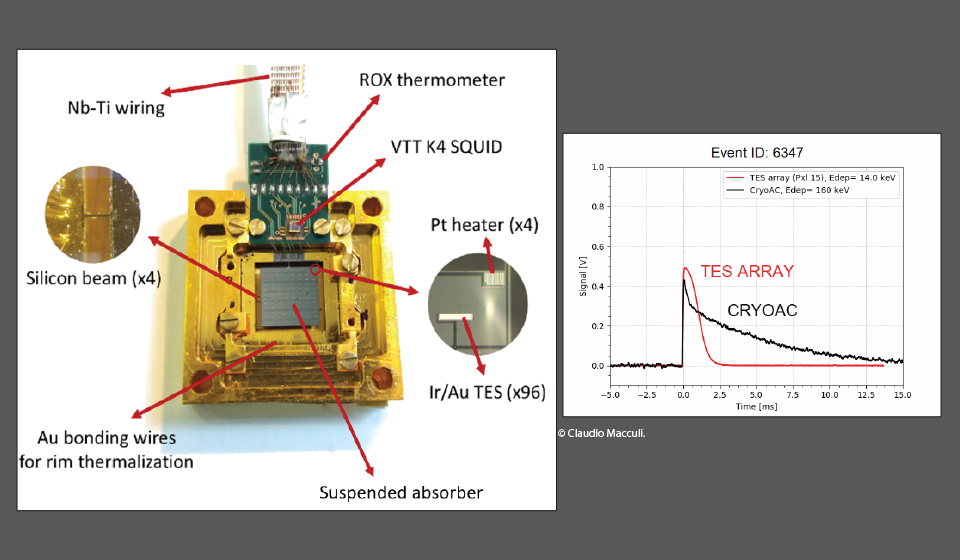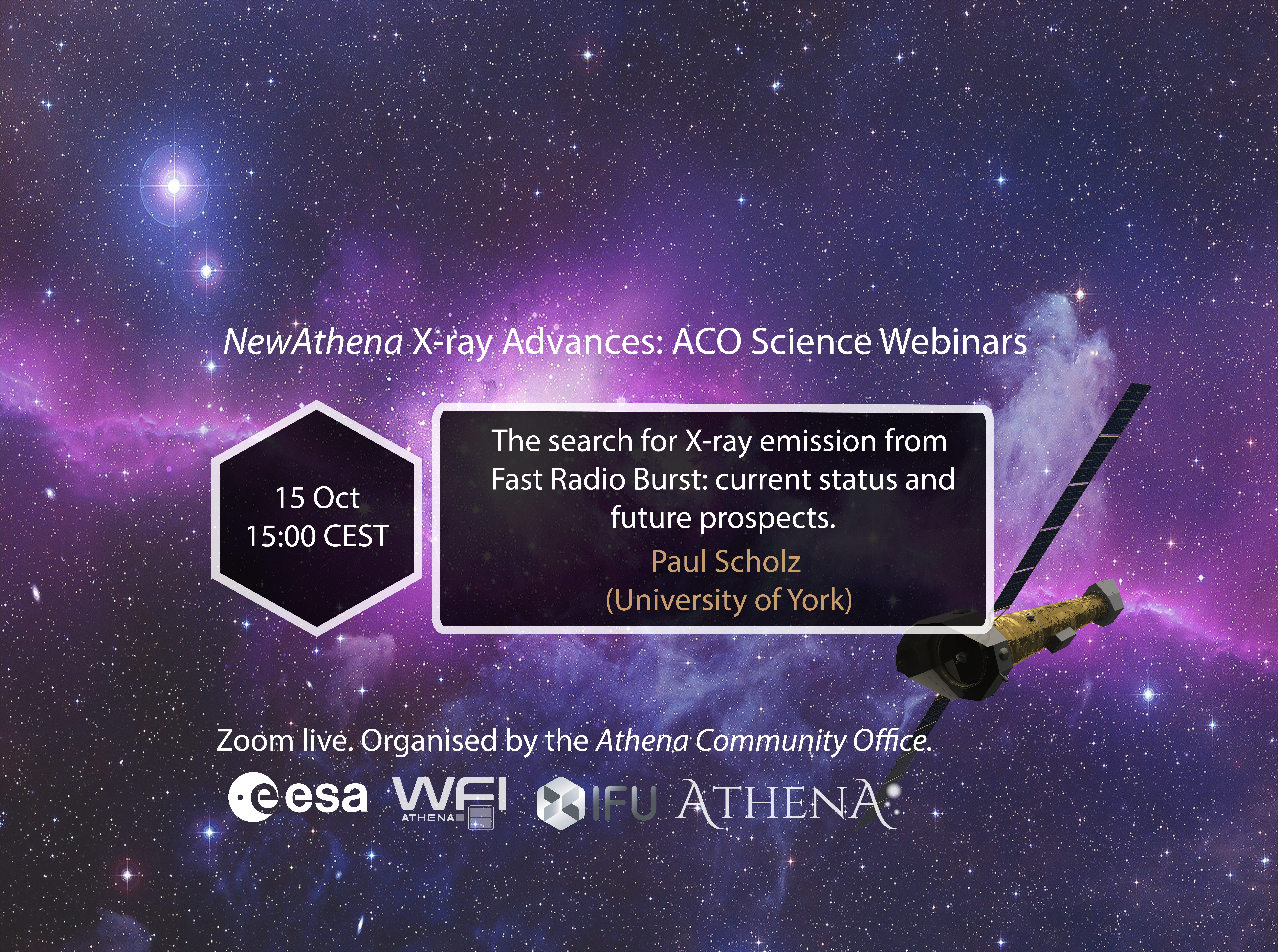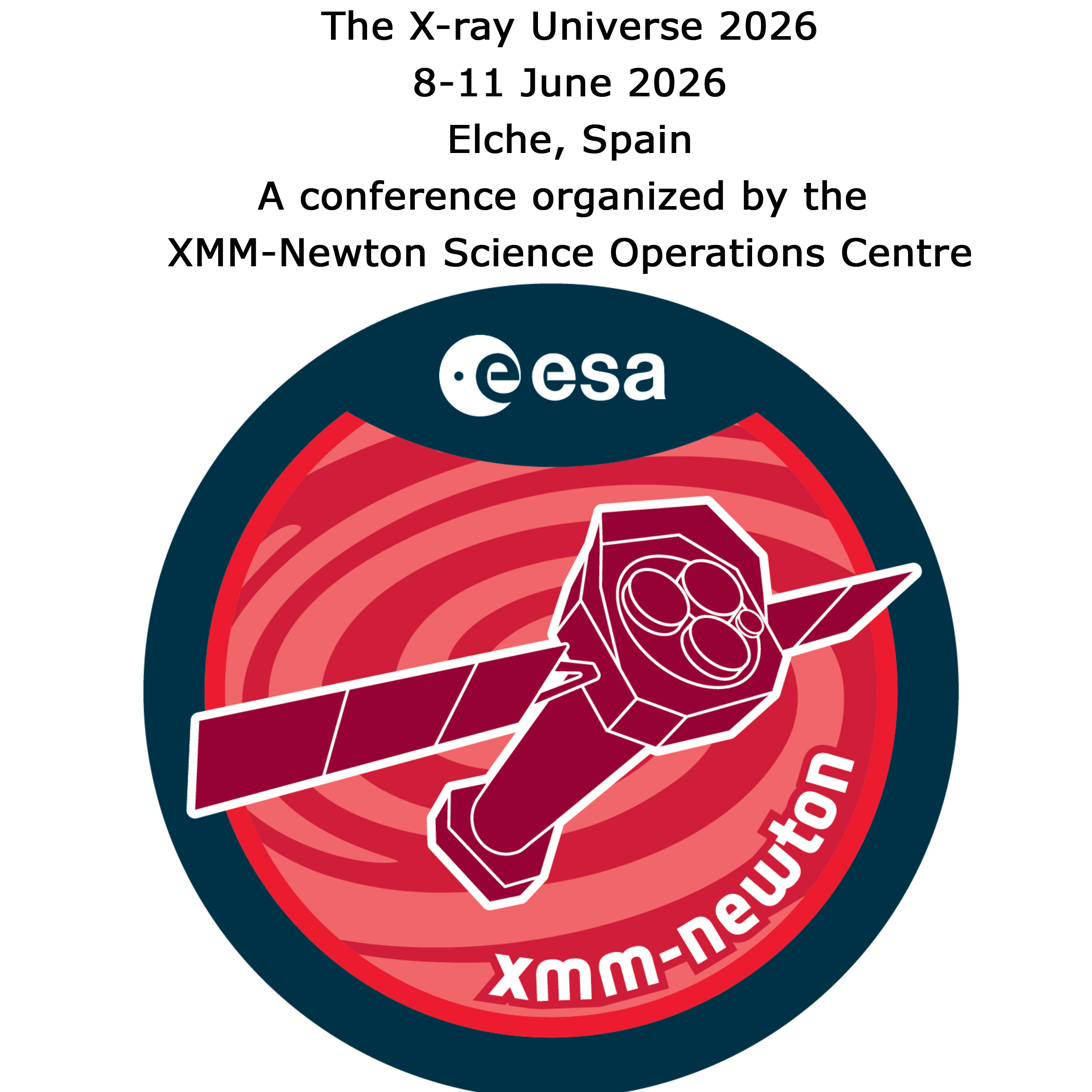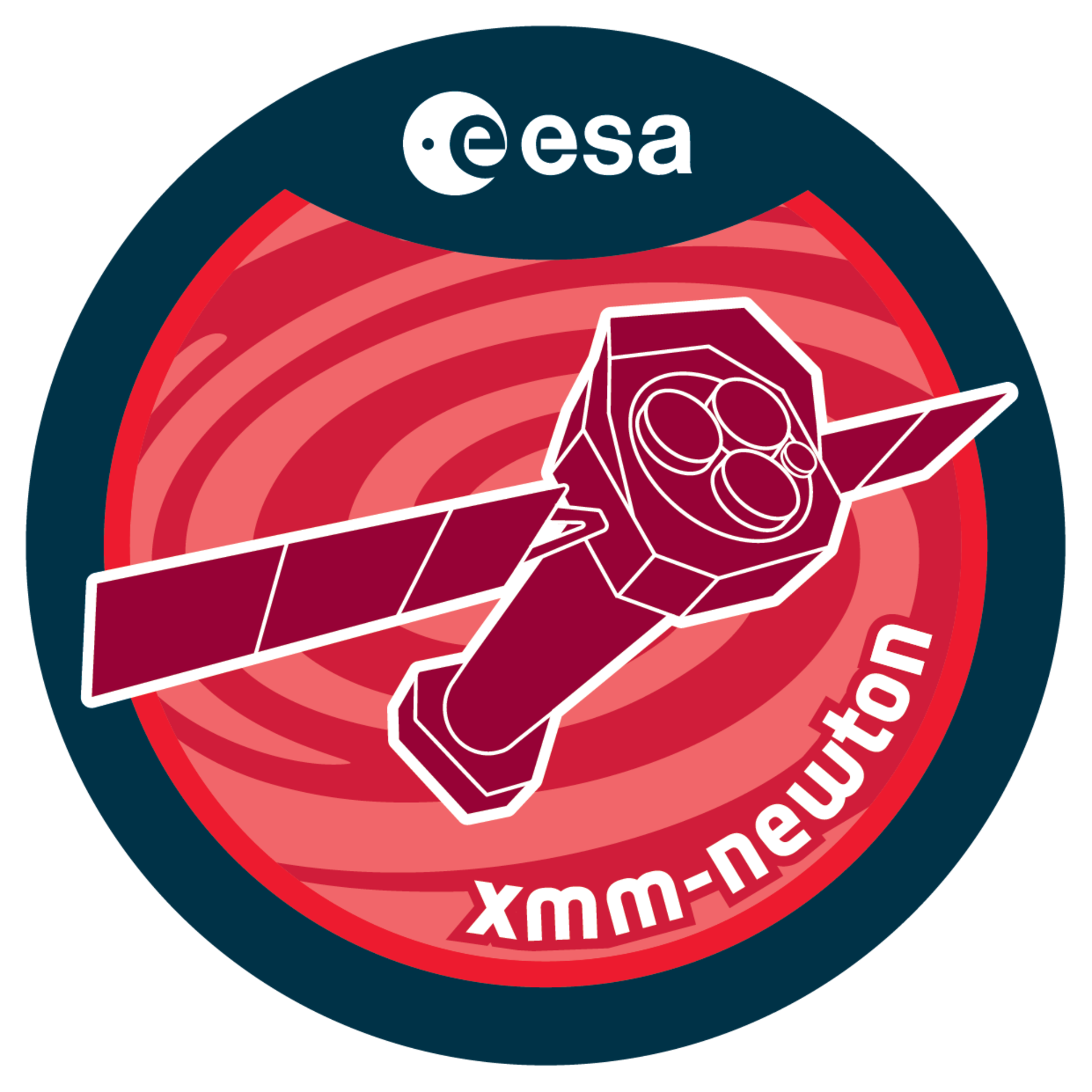
#AthenaNuggets: Finding the needle in the haystack: The Cryogenic AntiCoincidence

The #Athena Nuggets 47 by Claudio Macculi tackles the X-IFU particle background because it is essential to reach several central Athena science aims, such as the high-resolution spectroscopy of faint sources.
The X-IFU Geant4 simulations have shown that the Galactic cosmic-ray induced background is approximately 30 times higher than the level needed to meet the science requirements, if the instrument operates without any precaution.
The hardware that will allow reducing of this background to the needed value relies on a Cryogenic AntiCoincidence detector (CryoAC). It will detect all particles crossing both the Transition Edge Sensor (TES) array and the CryoAC with high efficiency. As a consequence, only two particles every 10.000 would be missed.
The detector concept and related prototypes have been designed and developed by an Italian consortium made of INAF institutes, University of Genova Phys. dpt., CNR/IFN Roma, and with the support of ASI. The most recent detector prototype is the Demonstration Model of the CryoAC, developed to prove the key critical technologies as operation at 50 mK and 20 keV low energy threshold, among others.
Latest News











